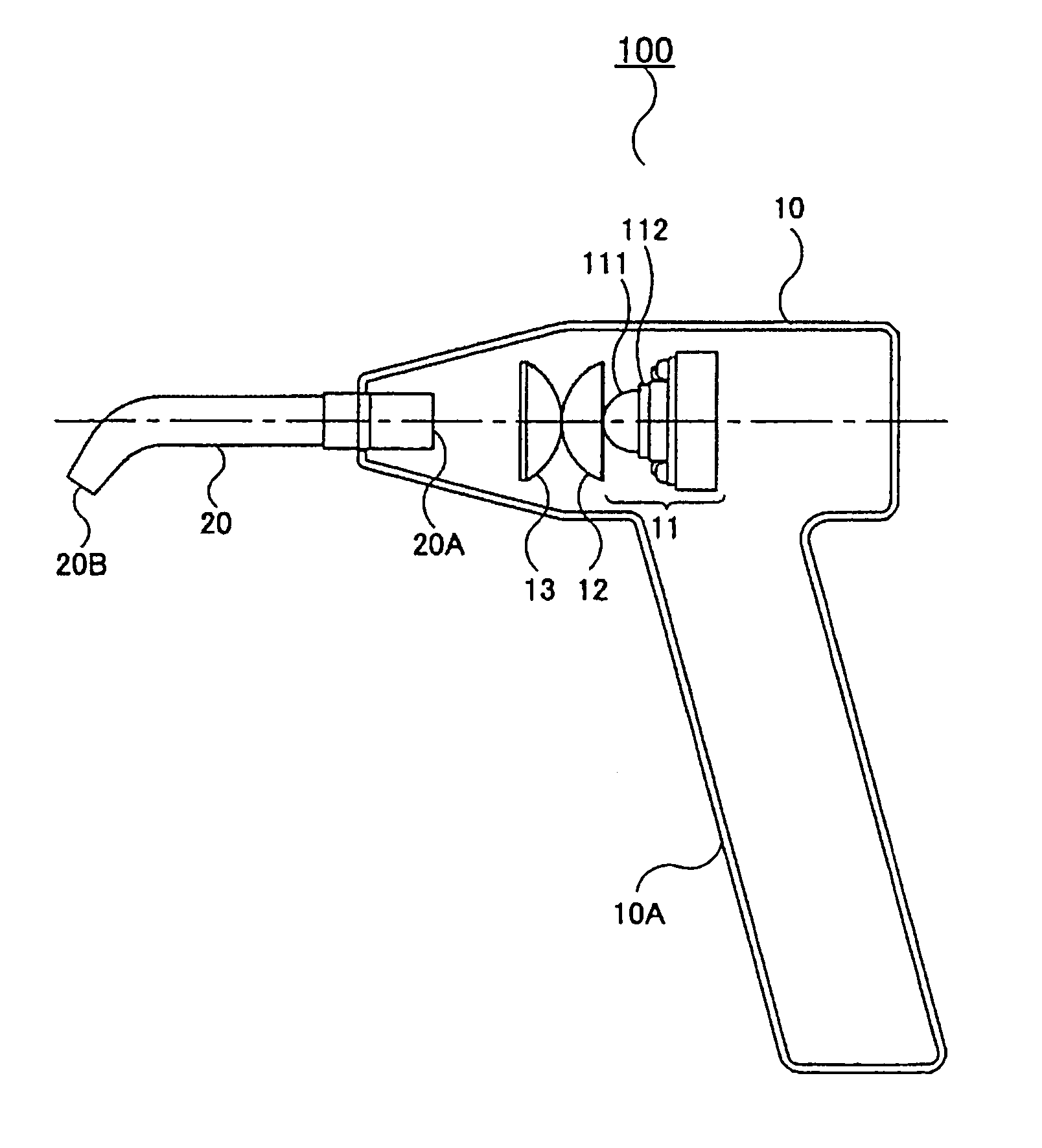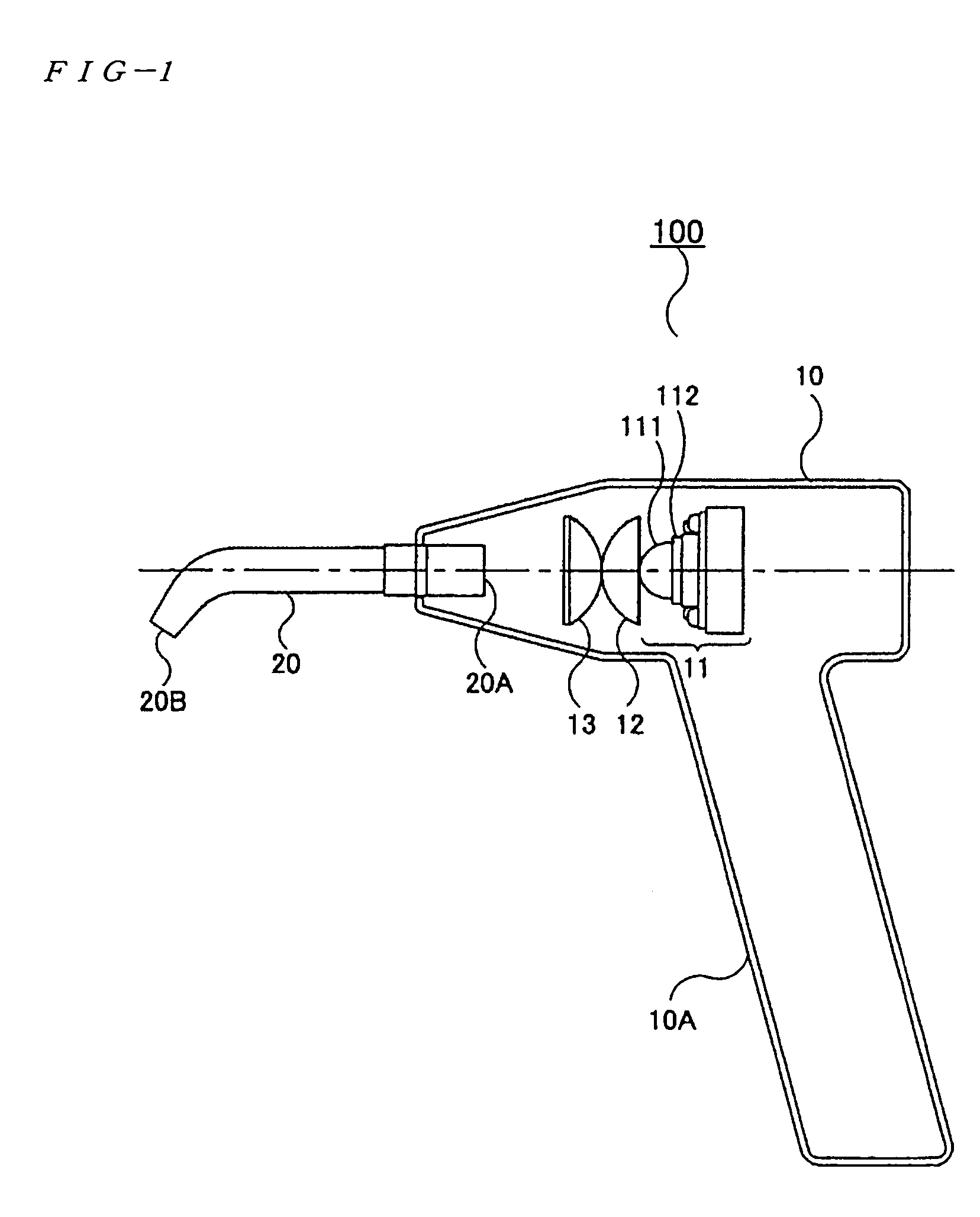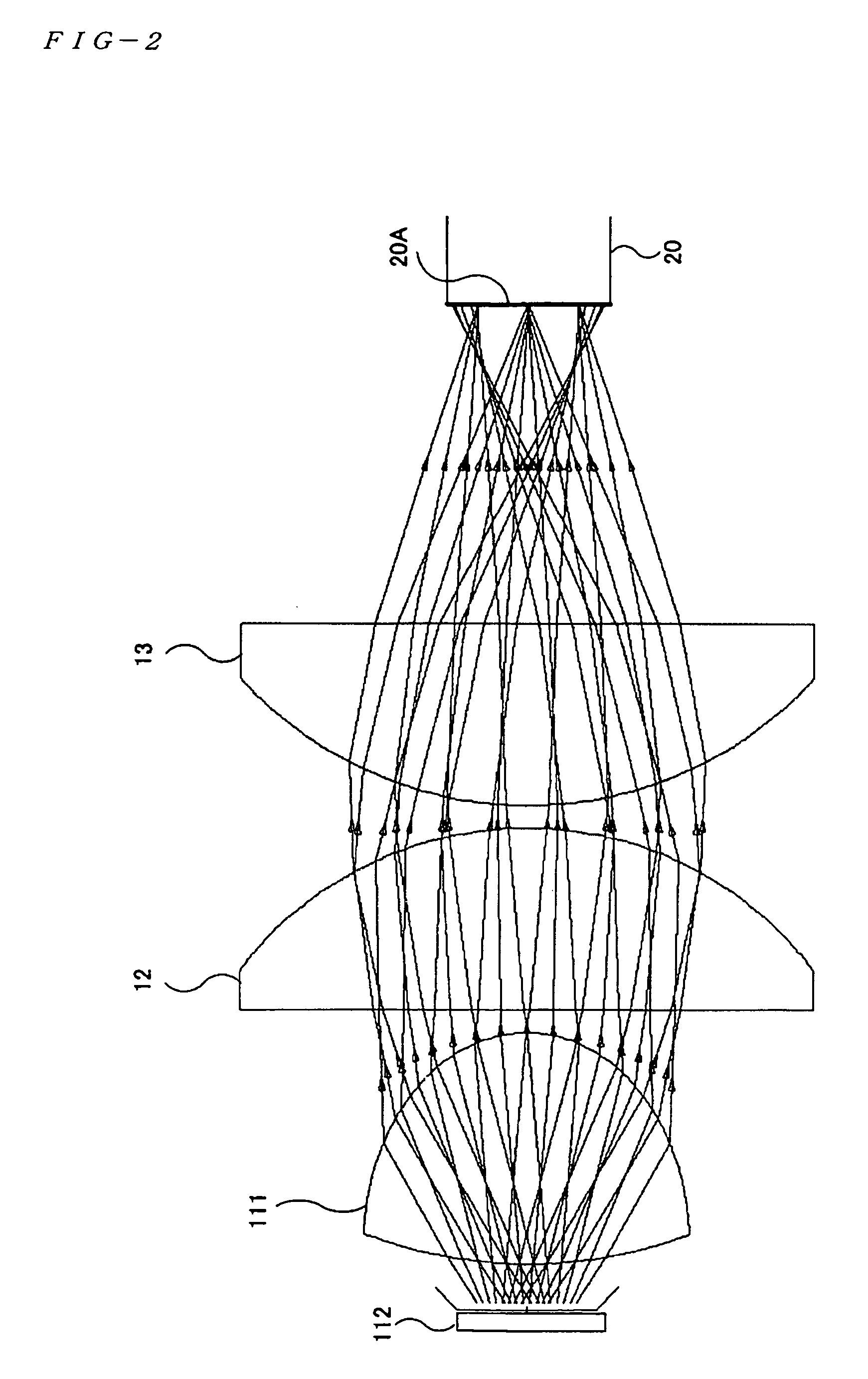Photoirradiation device and fiber rod
a technology which is applied in the field of photoirradiation device and fiber rod, can solve the problems of low light utilization efficiency, reduced light utilization efficiency, and high positioning accuracy, and achieve the effect of low damping factor
- Summary
- Abstract
- Description
- Claims
- Application Information
AI Technical Summary
Benefits of technology
Problems solved by technology
Method used
Image
Examples
Embodiment Construction
[0034](First Invention)
[0035]An embodiment of the first invention will be described below referring to the accompanying drawings. In the embodiment, the dental photoirradiation device for curing the photo-polymerization resin will be described as an example of the photoirradiation device.
[0036]FIG. 1 is a sectional view showing a configuration of the dental photoirradiation device according to the embodiment. A dental photoirradiation device 100 includes a main body 10 and a lightguide 20 which is provided on an end of the main body 10. The main body 10 has a cannonball shape, a pencil shape, or the like. Sometimes a grip 10A is provided in the main body as shown in FIG. 1. A control switch or the like (not shown) is provided in the main body 10 or the grip 10A, so that a dentist can operate to turn on and off the irradiation while holding the main body 10 or the grip 10A.
[0037]The main body 10 incorporates an LED light-emitting unit 11, a second lens 12, and a third lens 13. The LE...
PUM
 Login to View More
Login to View More Abstract
Description
Claims
Application Information
 Login to View More
Login to View More - R&D
- Intellectual Property
- Life Sciences
- Materials
- Tech Scout
- Unparalleled Data Quality
- Higher Quality Content
- 60% Fewer Hallucinations
Browse by: Latest US Patents, China's latest patents, Technical Efficacy Thesaurus, Application Domain, Technology Topic, Popular Technical Reports.
© 2025 PatSnap. All rights reserved.Legal|Privacy policy|Modern Slavery Act Transparency Statement|Sitemap|About US| Contact US: help@patsnap.com



